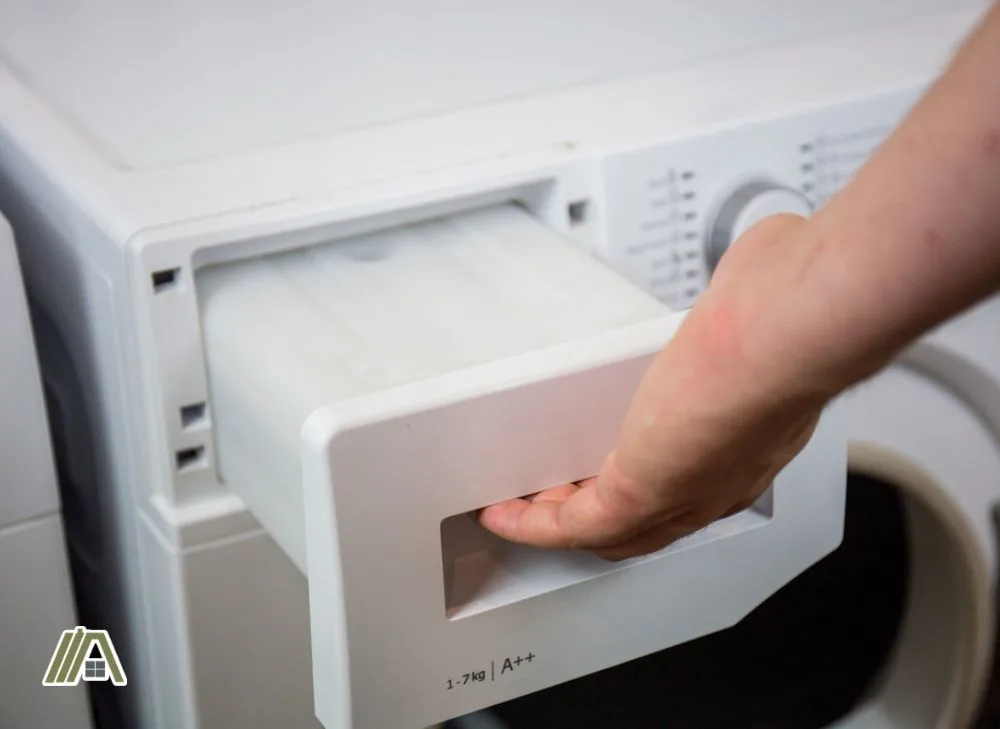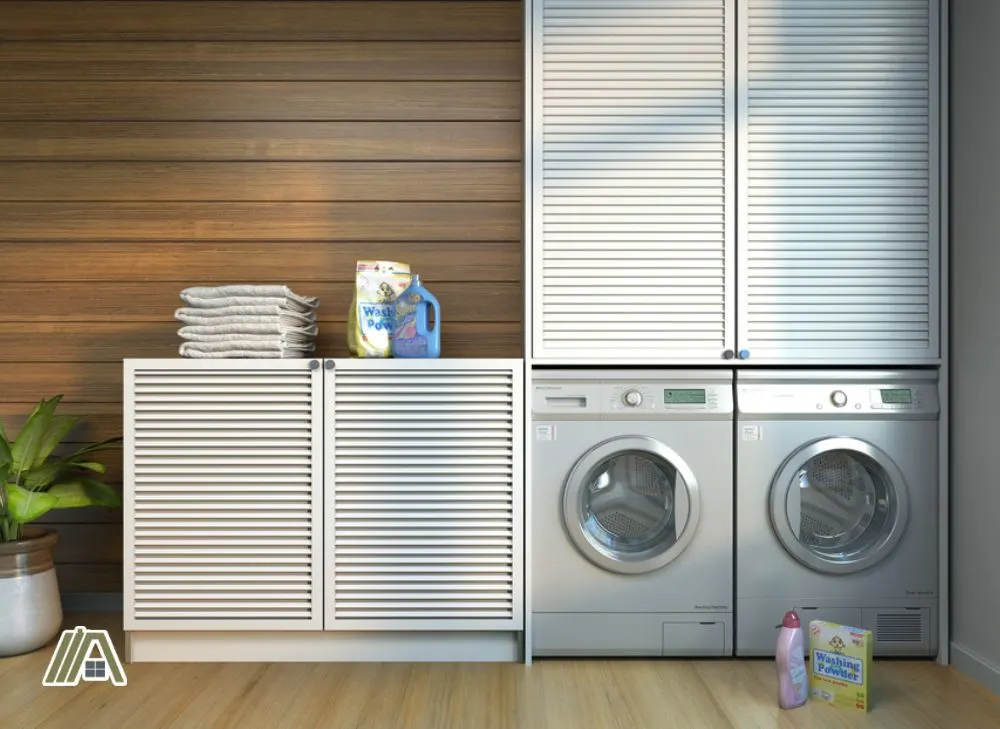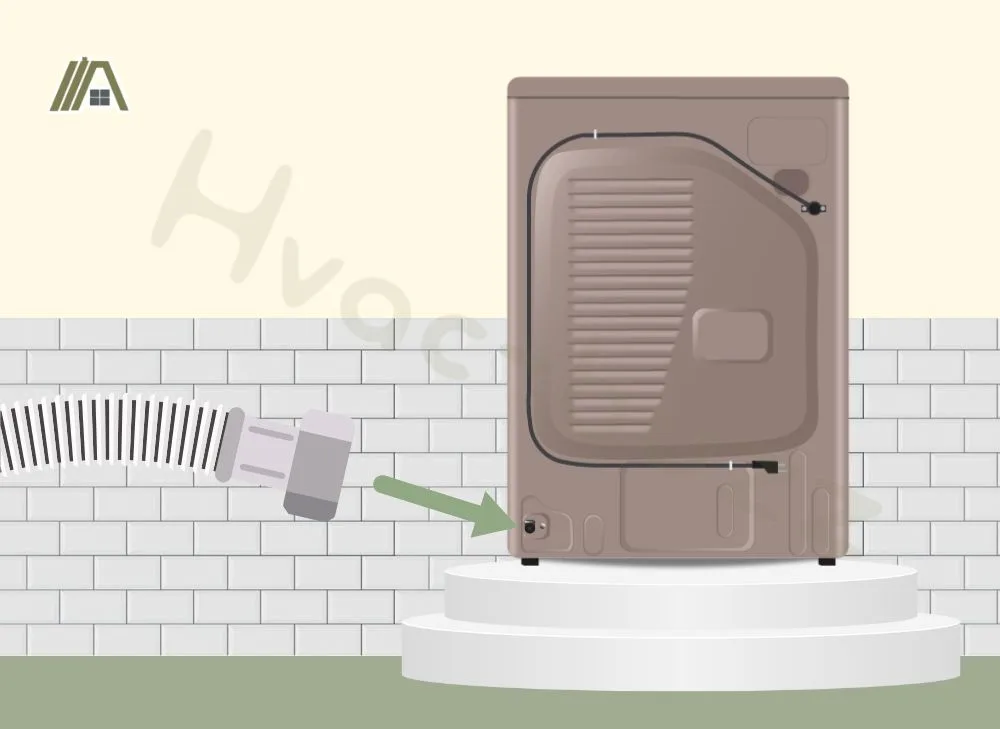A heat pump dryer is a great option for anybody looking to get an upgraded dryer. Not only are they eco-friendly, but they are also cost-effective and easy to install and operate.
It may, however, be confusing to figure out how they work. In a regular (vented dryer), the water removed from clothing is released outside as steam through the vent. Heat pump dryers are ventless, so the water must stay in the machine, but it can’t stay in there forever.

Heat pump dryers do not need to be plumbed in. They come with internal water collection tanks that get emptied as part of regular maintenance. However, most come with the option of connecting the tank to a hose. The hose can empty in a sink or be plumbed in.
Heat Pump Dryers Don’t Require Plumbing
Where Does the Water Go?
The water removed from clothing in a heat pump dryer stays in the dryer. It is collected inside a plastic tank, which is accessible from the outside but concealed in the body of the dryer.
Typically, the tank is on the rear side, and it should be emptied regularly.

Heat pump dryers work by using heating and cooling mechanisms. The dryer uses hot air to collect water from the wet clothes. Then, the moisture-filled hot air runs through a cooling system that causes the moisture in the air to condense.
The condensed water then gets collected in the tank. The cool and dry air is reheated by the compressor before re-entering the drum.
As the water is collected in a tank, the dryer does not need to be connected to any plumbing, which would remove it as it is formed.
User Requirements
It is very important to take care of your dryer’s water tank.
Because heat pump dryers aren’t connected to plumbing, you are required to empty their water tanks when they get full.
Typically, the water tank gets filled every couple of cycles. If you don’t empty it, you run the risk of it leaking.
When you empty the tank, you should also take the time to clean it properly. Sometimes, lint and soap can enter and sit in the tank, which can promote the growth of bacteria.
It is also recommended to dry the tank out occasionally. This is especially true if you are going a few days without using it.
If there is sitting water, then mold may begin to grow, which can spread throughout the dryer. By drying the tank out, you prevent growth from happening.
Many people repurpose the dryer water, which is not something that could be easily done if the dryer was plumbed in.
Lack of Plumbing and Venting Is Beneficial
You Can Install It Anywhere
A benefit of not having to connect your dryer to any ducts is that you have a lot more liberty on where you can install it.

On top of that, you also have the freedom to move your dryer with ease. Since it is almost free-standing, you do not need to commit to a singular spot, and you can, therefore, switch up your laundry room layout almost instantly without dealing with the hassle of vents and ducts.
If you still had to plumb the dryer in, then these benefits would not really exist. Having the collection tank means that you maintain the freedom that going ventless gave you.
The only limitation that you need to consider is that it needs to be connected to an appropriate outlet.
Non-Invasive installation
Another benefit of a heat pump dryer is that you do not need to go into or alter your home’s infrastructure to install it.
As stated before, heat pump dryers do not use vents or ducts. The fact that they also don’t require water pipes means that you can maintain this benefit.
Therefore, you are not just saving yourself the hassle of installation when getting a heat pump dryer. You also protect the room from holes and pipes.
Heat Pump Dryer Can Be Plumbed In
There is a Hose Attachment
Now, if the thought of emptying out the water collection tank is putting you off of heat pump dryers altogether, you will be happy to learn that there is the option to attach a hose to the dryer. And attaching a hose is very simple.

Depending on the dryer you purchased, it may or may not have come with a hose. If one did not come included, you could very easily purchase one separately.
To install it, you simply attach the hose to the water drain. You then run the hose to a drain in your house.
Benefits of Setting up the Hose
The main benefit of setting up the hose is that you do not need to empty the water tank. Since the hose provides a straight path to the drain, you won’t need to worry about water buildup. This also means that your dryer is less likely to leak.
In addition, since there will not be sitting water in the water tank, you do not need to worry about lint buildup and mold growth. Overall, setting up a hose means that you do not need to perform upkeep as frequently.
Drawbacks of Setting up the Hose
Unfortunately, there are some drawbacks to setting up a hose for your heat pump dryer.
First of all, your dryer needs to be relatively close to a drain in order to even set up the hose properly. This limits the number of places you can have your dryer.
Setting up a hose also means that you need to put in more effort to move your dryer. Therefore, if you do not like where your dryer is, then it is more of a hassle to not only find a better spot for it but also relocate it.
Sources
https://www.thisoldhouse.com/21097178/exploring-a-heat-pump-clothes-dryer

